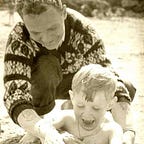A New Approach to Teaching and Learning Chemistry
How might we get students inspired by chemistry so that they want to study it and pursue a career in it?
Earlier in my career history, I was an industrial chemist. (I joke about being an ex-chemist frequently since I no longer practice it!) At University College Cork, I studied chemistry and received a B.Sc.(hons.) In addition, I received an M.Sc. in Analytical Chemistry from Dublin City University, and I have an incompleted Ph.D. in Public Health Engineering from Imperial College London. ( I wrote up four of the five chapters of my doctorate thesis and just could not bring myself to write the last chapter!) I love chemistry and have taught it throughout the High School level early on in my career.
In the last few years, I have been in and out of many schools, and I have noticed a trend of more students entering engineering than science fields. Schools emphasizing design and engineering in their curriculum and the proliferation of Fab Labs, Idea Labs, Maker Spacers, Tinker Spaces, etc., (all places to make and experiment) deserve a lot of credit for this.
I believe students aren’t pursuing Science careers because not enough educators inspire them in the classroom. As I’ve seen so much humdrum science being taught in schools, I’ve begun thinking of new ways to inspire students through science. The first step to solving any problem is being inspired. ( I have written a piece about this here called “Why you need to be inspired to solve problems) I am convinced that if we inspire our students to love science, they are more likely to study it and pursue careers in it.
Recently I have been researching current innovations and inventions in the science field, and I have come up with an anthology of science papers.
Take a look at this image:
The above image is a sample of current innovations and inventions in various science fields. I have summarized the content of the article into topics on the post-it beneath the image. Students should choose an article that interests them and then follow the following steps:
Step 3. I imagine students will come up with various ways to demonstrate the learning experience. Demonstrate is a broad term, so this is wide open to interpretation by the student. Demonstrate might be a film, a tutorial, or a sculpture. The possibilities are endless. By letting step 3 be very open, students will learn about design, innovation, imagination, and creativity as well. The openmindedness of this activity allows for this.
Step 4. Demonstrating what students have learned is the best way for a teacher to determine if a student has learned.
Step 5. This brings the assignment back into a traditional format — “communicating in writing,” but by publishing their work in a public publication (Medium), the students' work reaches a wider and more authentic audience.
I’m excited to start prototyping this course at Marymount School of New York this week. If you are interested in learning more? Contact me! Or if you want to join us in class, you’re welcome.
A new study led by Stanford education researchers offers encouraging evidence.
More HERE
